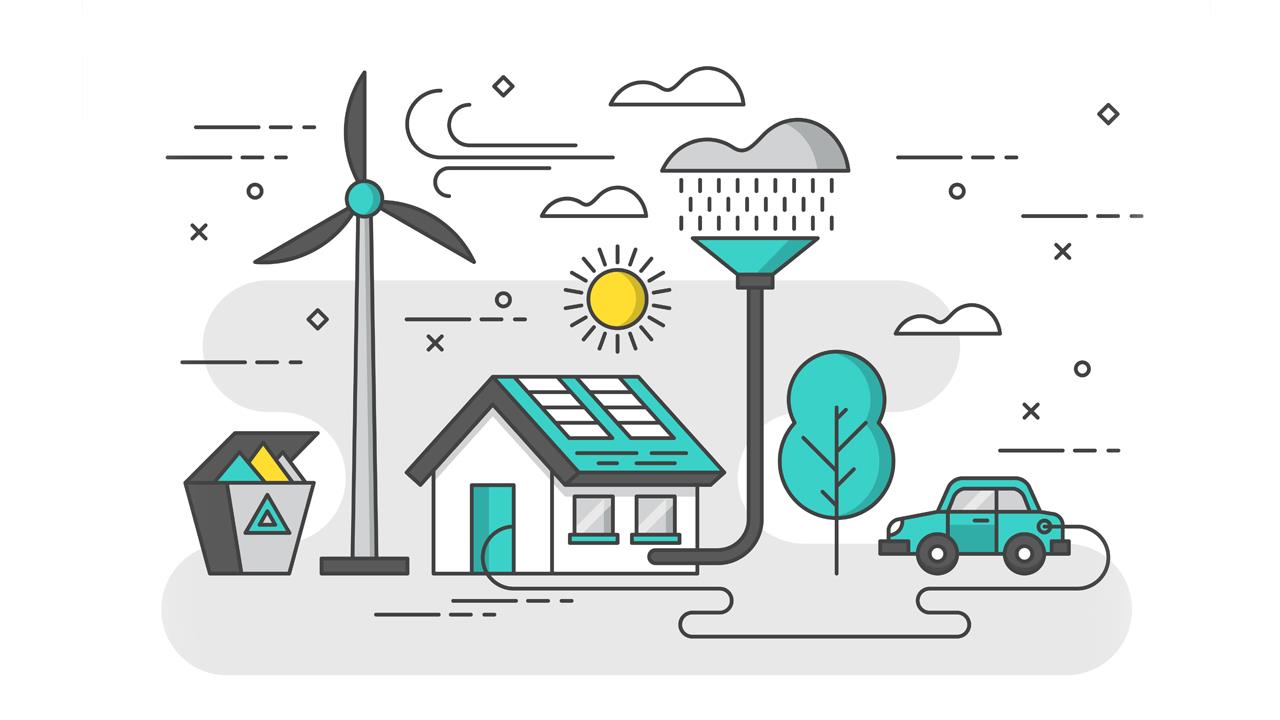


Steve Sutton, Technical Manager at the Heating and Hotwater Industry Council, looks at how hybrids could be the solution the UK needs to move forward with decarbonisation.
Heating the roughly 28 million residential dwellings in Great Britain accounts for 46% of the country’s energy use, with 85% of these properties heated by the combustion of fossil fuels.
The need to reduce both primary energy consumption and CO2 emissions is evident if the UK is to meet its legally-binding emissions targets by 2050.
In its latest report, the Committee on Climate Change (CCC) has argued that the “UK government, householders, and developers need to implement policies and measures now” that ensure that the UK’s housing stock can meet future demand.
Currently, two solutions dominate the decarbonisation debate – electrify the network or look to alternative fuels and fuel combinations. To date, the CCC seems to be erring on the side of electrification and ending connections to the gas grid for newbuild homes, while also recommending the use of fuel combinations such as a gas boiler and an air source heat pump. It’s all a bit confusing!
Electrification brings more questions than answers for many, but there is an alternative solution which could be tabled in the form of hybrid heating systems. Hybrids, or bivalent systems as they are sometimes known, are those that provide energy, heating, and hot water from a combination of renewable sources and a traditional one.
The combined system could provide a dramatic reduction in primary energy consumption and emissions. This would meet the demands of the CCC by helping new and existing homes to become low-carbon and ultra-efficient.
For instance, a homeowner may opt to have a heat pump that is electronically interlocked with a traditional boiler. One controller decides when to use the heat pump and when to use the boiler, to ensure that demand is met and the most energy-efficient heating source is employed.
This scenario already has governmental support. In November 2016, the Department for Business, Energy and Industrial Strategy (BEIS) published Domestic Hybrid Heat Pumps, which argued that a hybrid heat pump system that switches between the two sources offers a valuable means of optimising running costs, boosting energy efficiency, and lowering carbon emissions.
Schemes like the Freedom Project by Wales and West Utilities, in collaboration with Western Power Distribution, have positively demonstrated how the combination of a smart hybrid system can work in practice in a domestic setting.
Carried out in Bridgend, Wales, this scheme was well received by the 75 homeowners included in the test. The tandem technologies provided the flexibility to ensure the home comfort of the consumer, even when faced with severe cold spells, and a guarantee of the availability of hot water.
Hybrid technology also offers a valuable opportunity for the newbuild market. With new well-insulated properties, the scope for installing a renewable heat source in tandem with a gas boiler is certainly possible.
Coupling the heat pump to a gas boiler also gives energy suppliers the option of avoiding extra investment in generation and the transmission infrastructure by using smart grids. The growing demand for electricity may mean that the energy provider will switch to the gas boiler at times of peak demand.
Hybrids also offer a means of decarbonising off-mains gas homes, as they can be partnered with oil or LPG boilers.
This means that the 15% of properties not connected to the gas grid can still benefit from the installation of hybrid technology, and do not necessarily need to go ‘boiler free’ in order to reduce their carbon emissions.
What’s next?
In July 2018, the Standard Assessment Procedure (SAP) 10 was published by BEIS and the Building Research Establishment (BRE).
The changes, to be implemented when Part L/Section 6 of the Building Regulations is updated (expected 2019/2020), will see the favourability of electric heating increase. It is worth noting, though, that BEIS is currently evaluating hybrid heating systems to understand their potential.
Once this has been ascertained, and the route for them to be more easily listed in SAP is complete, there will be a more fortuitous opportunity to show their full potential.
The nature of the decarbonisation debate is now changing. Electrification is no longer seen as a silver bullet that can do away with high carbon emissions, and we should also remember that the development of ‘green gas’ through the increased use of bio-methane and hydrogen is another plus for hybrid technology.
Hybrids have the potential to become a real phenomenon, they are a sensible solution to a complicated dilemma. The next step? Ensuring that all technologies which have the potential to deliver affordable, low carbon heating are given the time and exploration they deserve.
If you'd like to keep up-to-date with the latest developments in the heating and plumbing industry, why not subscribe to our weekly newsletters? Just click the button below and you can ensure all the latest industry news and new product information lands in your inbox every week.